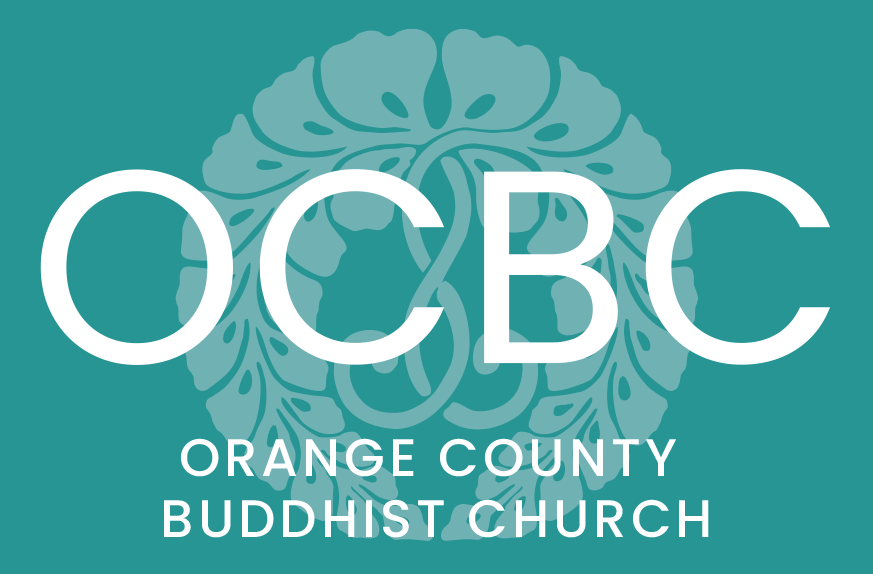Lesson from Weeds
Time flies! I cannot believe that the year is already coming to the end. As we mature, every year passes faster and faster. We did the year-end clean up on Saturday November 2nd. One-week later, full-time Kaikyoshi Ministers and Minister’s Assistants polished the Naijin ornaments in the Hondo and Kodo on November 8th.
On September 27th, about twenty BWA and ABA members trimmed the trees and weeded the Calico house where I live with my husband. They arrived early morning and worked through noon. Front and back yards became so clean. Thank you so much for taking your time to clean. Of course, our maintenance team takes good care of the yard. Mr. Kawamura planted two tomato trees, and they are growing nicely. Petit tomatoes are sweet and juicy, and perfect for green salad. Thank you! We are so grateful to all of you for allowing us to live in such a cozy house and I can have a privilege of a short walk to our temple.
During summer, I pulled weeds growing in a narrow area between cement. They are strongly rooted in ground, and it was quite hard to pull them out. I mumbled “You are such stubborn weeds,” then, that word made me laugh. I felt like hearing a voice telling me, “That is YOU!”
I've heard that people tend to become stubborn as they mature. Internet site says that the reason why people become stubborn is because they gain more experience, and pride themselves on having more knowledge and experience than younger people.
Conscious Experiences go into the Storage of Memories:
Since I was a small child, I was very curious about how the human brain works. There are many areas that have not been scientifically explained even now. But, amazingly 1,500 years ago Vasubandhu (ca. 316-396 C.E.) in India, who was the second Pure Land Master selected by Shinran Shōnin, had figured out a revolutionary way of understanding of how humans receive consciousness and store memories. It is called a Yogācāra theory, and he founded the School of Consciousness-Only with his elder brother Asanga (ca. 300-370 C.E.)
Let me briefly explain Yogācāra – Representation-Only theory. We humans have the six sensual organs: eyes, ears, nose, tongue, body, and mind. Each organ captures the visible objects (it looks good or bad), sounds (it sounds good or bad), scents (smells good or bad), tastes (tastes good or bad), touching objects (feels good or bad), and many thoughts.
1. Eyes and Visible Objects
2. Ears and Sounds
3. Nose and Scents
4. Tongue and Tastes
5. Body and Tactile (touching) Objects
6. Mind and Thoughts
Anything to see, hear, smell, taste, touch singles to the sixth sensual function of mind and thoughts, and they become memories, which will be stored in our memory storage. Asanga and his younger brother Vasubandhu, who were the Indian Buddhist masters, thought that there were two more levels for memory storage within humans. Those are called manas (the 7th level; ego consciousness), and alaya-vijnana (the 8th level; where a person’s karmic seeds are stored). The 7th level presents the deluded awareness, ego, self-attachment, or fixed-mind, which has a negative impact to the 8th level.
Power of Hearing the Buddha-Dharma:
As we live and gain experiences every day, either good or bad through the six senses, our storage of memories become full and may hold onto egoistically fixed-thoughts, which lead us to the mind of stubborn-ness. Even someone makes sensible suggestions, we sometimes instantly reject them, or don’t even listen to them because of our ego and fixed-mind. I am sure that we all have this experience.
How can we then practice to get away from our own fixed-mind in the 7th level? One of the forty-eight vows established by Bodhisattva Dharmākara (later became Amida Buddha) mentioned in the Larger Sukhāvatīvyūha Sūtra goes with:
When I attain Buddhahood, the sentient beings throughout the countless and inconceivable Buddha-worlds in the ten quarters, having received my light and having been touched by it, will become soft and gentle in body and mind, surpassing humans and devas in those qualities. Should it not be so, may I not attain the perfect enlightenment.
[The Three Pure Land Sutras, Volume II, by HIC, p.26]
This vow says that once all living creatures touch and receive the Amida’s light of wisdom which is the non-judgmental wisdom called prajna, their bodies and minds become supple and flexible that is beyond humans and devas. This is the power of hearing the Buddha-Dharma.
Hearing the Light of Prajna:
Shinran Shōnin uses an interesting expression of hearing the Buddha’s Light (聞光; mon-kō). How can we hear the Light? Light is normally recognized by vision according to our six senses. Well, for Shinran Shōnin, hearing the message from Amida is super important as the Jūseige 名声超十方 (myo-sho-cho-ji-ppo; My Name shall pervade the ten quarters) says. It further means that we receive the non-judgmental wisdom by hearing the Amida’s calling voiceless voice Namo Amida Butsu to us. One of his wasans goes:
The light shines everywhere ceaselessly;
Thus, Amida is called “Buddha of Uninterrupted Light.”
Because beings hear [and apprehend] this power of light,
Their mindfulness is enduring and they attain birth. [CWS I, p.327]
Shinran Shōnin must have felt this, receiving the uninterrupted light of wisdom which continuously sustained him in the journey to Buddhahood. To make our fixed-mind supple and flexible, we immerse ourselves in the Buddha-Dharma, and hear the meaning of the Amida’s Name, so that joy arises spontaneously to live steady and strong, while appreciating all things to support our precious lives and guide us to the journey toward Buddhahood.
I wish you all a Happy New Year 2025. It will be the year of snake. Just as a snake sheds its skin, OCBC and Sangha too will strive to achieve further growth in the new year.
Namo Amida Butsu
Calico House Backyard beautifully trimmed and weeded! Thank you so much!!



